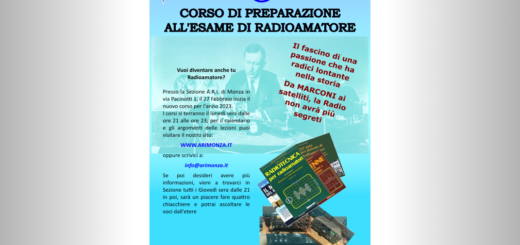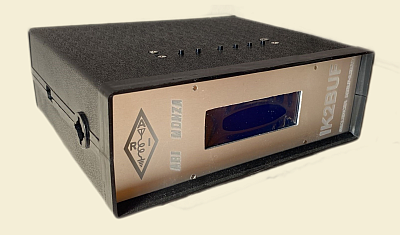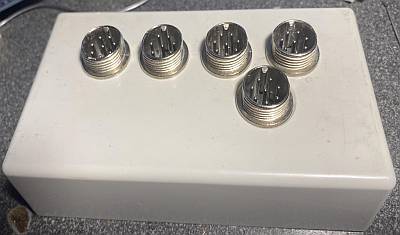28 gennaio 2020
ARISS educational radio contact with school in Serbia
An International Space Station school contact has been planned with participants at Primary School Jovan Jovanovic Zmaj, Sremska Mitrovica, Serbia.
The event is scheduled on Tuesday 28 January 2020 at approximately 15.51 UTC, which is 16.51 CEWT.
The contact is expected to be conducted in English.
The contact will be a direct between astronaut Luca Parmitano KF5KPD and YU7BPQ.
The contact should be audible over parts of Europe. Interested parties are invited to listen in on the 145.800 MHz narrowband FM downlink.
School information:
Primary school Jovan Jovanovic Zmaj from Sremska Mitrovica, situated on the left bank of the Sava river in the middle of the region of Srem, is a vibrant, friendly and nurturing school with 65 years of tradition and experience.
The motto of the school based on the lyrics of a famous Serbian poet Jovan Jovanovic Zmaj: “Where I stopped, you carry on”, so at school they try to continue the tradition of open-minded, creative, innovative, child-oriented learning and teaching. Based on the past generations’ legacy, the school is striving towards shaping cosmopolitan citizens with highly developed tolerance within a multinational society while employing a spectre of techniques to keep up with the modern, high-tech approaches.
The school offers a broad, however, balanced curriculum in a stimulating environment to our 1044 pupils, supported by a wide range of after school clubs and quality school trips. They are always seeking ways to bring to life STEM and foreign language subjects via real-life situations.
This year pupils, teachers, and the HAM operators who support them are as busy as bees, or perhaps as the ISS crew, because they want to talk to the astronauts on the ISS so they are learning about space through various subjects and activities. It is a part of their educational proposal with ARISS. There are fun classes, costumes, Milky Way installation, drawings, maths, history geography and more! Their friends from the radio amateur club YU7BPQ are helping them with the radio contact! They made a huge antenna! Radio communication is for most students and teachers a new experience. Furthermore, they are learning how to use an amateur radio station! Just imagine how thrilling it is to press the button and hear some noise before you hear the voice behind it! Old school though good stuff!
You can follow all their activities on the project blog page 022tothemoonandback.zmajsm.edu.rs/home/about-project/
Students First Names & Questions:
1. Ena (12): Which planet would you like to visit and why?
2. Hristina (12): What manmade wonders can you see from space?
3. Una (12): What is the furthest spot on the horizon and what can you see around you?
4. Dunja (12): Why is the temperature at ISS at constant 38 degrees?
5. Dositej (13): What do you do when you cut yourself?
6. Masa (13): What do you do when you can’t sleep?
7. Dimitrije (13): What kind of music do you listen to and who chooses it?
8. Eleonora (13): What do you do for fun?
9. Elena (13): What is your favourite thing about space?
10. Mihailo (13): Is your space suit comfortable?
11. Lara (14): Is life in space difficult?
12. Natasa (13): Can you eat ice cream in space?
13. Marija (14): What is on today’s menu?
14. Luka (12): Do you prefer taking off or landing and why?
15. Andela (11): What do you miss most about Earth?
16. Ognjen (14): Can you see thunders and lightening on Earth?
17. Aleksa (12): What would you do if you happen to drift away from ISS?
18. Aleksandar (12): What do you do when you get ill?
19. Nikola (12): What does it feel like when you get back to Earth?
20. Mila (11): How does the Earth look from above?
About ARISS
Amateur Radio on the International Space Station (ARISS) is a cooperative venture of international amateur radio societies and the space agencies that support the International Space Station: NASA, CSA, ESA, Roscosmos, JAXA.
In the United States, sponsors are the Radio Amateur Satellite Corporation (AMSAT), the American Radio Relay League (ARRL), the ISS National Lab and National Aeronautics and Space Administration (NASA).
The primary goal of ARISS is to promote exploration of science, technology, engineering, and mathematics (STEM) topics by organizing scheduled contacts via amateur radio between crew members aboard the ISS and students in classrooms or public forums. Before and during these radio contacts, students, educators, parents, and communities learn about space, space technologies, and amateur radio. For more information, see www.ariss.org.






